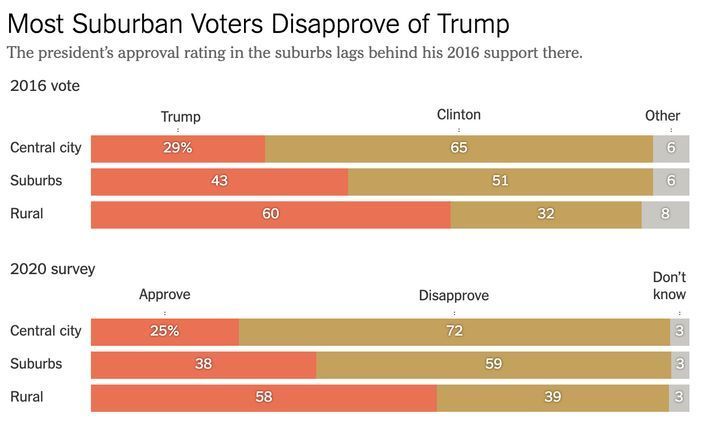
Id and Superego in the Suburbs: Do White Liberals Hate Trump Enough To Destroy Their Own Homes?
By Steve Sailer
08/02/2020
In New York magazine:
Trump’s Racism Won’t Win the Suburbs. But It May Diversify Them.
By Eric Levitz@EricLevitzTHE SUBURBS JULY 31, 2020
Alas, if Trump has an intuitive grasp of white suburbia’s id, he has no feel for its superego. Making it impossible for poor people to move to your town — and thus, lay a claim on your local tax dollars, or the time and attention of your kid’s public school teachers — clearly has some appeal to left-leaning suburbanites. But being confronted with the fact that this is what they are doing when they oppose new construction — let alone, that by doing so they are effectively entrenching racial segregation — has no appeal to this voting bloc. NIMBY liberals want racially exclusionary zoning policies wrapped up in rhetoric about historical preservation, not Trump’s garish branding.
In fact, by ripping off liberal NIMBYism’s Jane Jacobs mask — and revealing that it was actually Old Man Racism all along — Trump likely did more to advance the cause of neighborhood desegregation than that of his own reelection. A variety of euphemisms — and the fact that zoning laws are a form of government regulation — have helped liberal NIMBYs reconcile their political identities with their reactionary housing politics. Trump has now made that task more difficult. Meanwhile, among liberal homeowners who’d previously lacked strong views about local housing debates, Trump’s intervention could be a catalyst for pro-inclusive-zoning voting behavior and civic engagement. The president has already demonstrated a gift for mobilizing Democrats against regressive policies they’d previously abided (or even supported). There are large and important distinctions between the Obama and Trump administrations’ immigration policies. But there’s no question that the unabashed racism of the latter’s rhetoric on border security made white liberals less tolerant of mass deportation — and more supportive of Central American migrants’ asylum rights — than they had been under Trump’s predecessor. Similarly, by associating opposition to immigration and trade with xenophobic nationalism, Trump has brought the American public’s support for both those pillars of “globalism” to new heights.
Of course, as already noted, affluent white liberals are more apt to put ideology above privilege on national issues than on those that hit closer to home. But even before Trump’s intervention into the NIMBY debate, the movement for inclusive zoning was already gathering momentum, scoring a major victory in Minneapolis and narrowly losing a fight for reform in that mecca of regressive housing policy known locally as “California.” The president’s remarks are unlikely to change the hearts of the minority of suburban liberals who attend zoning meetings to actively oppose affordable housing developments. But they could serve to nudge more passive supporters of discriminatory housing policy toward a “come to density” moment.
Or then again, maybe not. My father’s insight in 1969 that Beverly Hills and Malibu liberals were all jumping on the environmentalist bandwagon to keep out the less privileged remains a head-slappingly rare idea in 2020. One should not underestimate liberals’ ability to vote for the smart thing locally: e.g., the Democrats lost 5 straight elections in New York City after the one term of the only black mayor, without New Yorkers adjusting their hectoring of the rest of the country at all.
